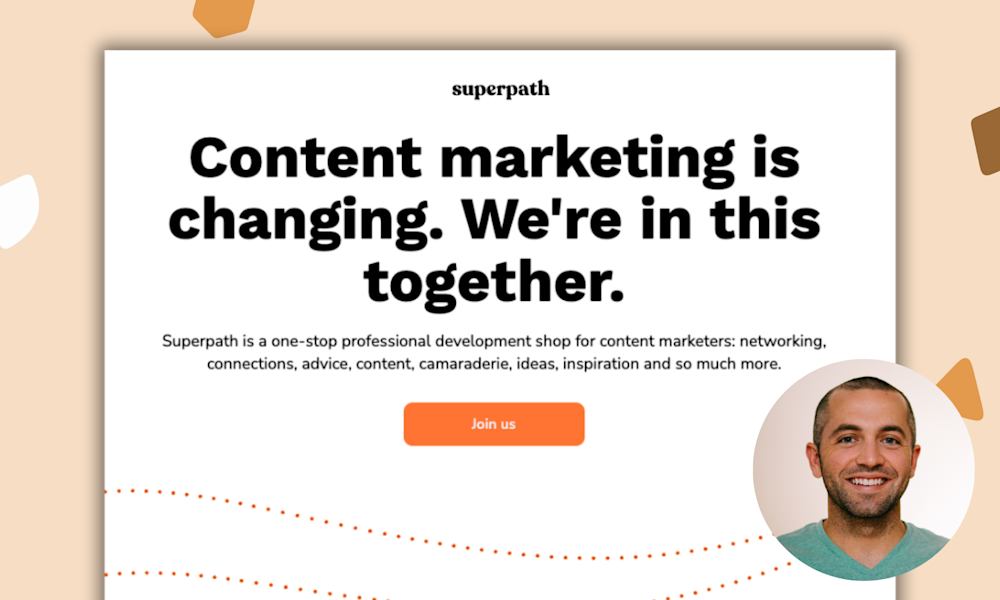In the two years Dana Miranda worked as a personal finance journalist, she noticed a trend. “Most of the personal finance content out there, most of the advice and education, is from a singular point of view, which is usually white, male, heteronormative, and from a middle-class background.”
“I come from a working-class background,” Dana shares. “I’m a queer woman. And I kept seeing that there was a lack of representation and understanding of the nuances of these different kinds of experiences that people have with money.”
Instead of reproducing the same information that everyone else was sharing, Dana decided to change the narrative.
Today, Dana Miranda is a personal finance educator and the founder of Healthy Rich, a platform for inclusive, budget-free financial education. Here’s how Dana built her online business and ensured that her work reached as many people as possible, even if that meant going a nontraditional route.
Just because a monetization strategy is popular doesn’t mean it’s right for your business
Healthy Rich began as a side hobby that Dana ran while working as a freelance writer.
“I started Healthy Rich as a project to tell different personal finance stories. It was just a blog and there was no money coming in. I wasn’t quite sure what monetization would look like, but I knew that eventually, I wanted to grow it into a business.”
“I didn’t want to monetize through advertising and affiliates,” Dana explains. “That’s really common in the personal finance space, and I didn’t like what I had seen on sites that I’d worked for. To make sure we were providing value for the end user, I wanted to take ads out of the equation.”
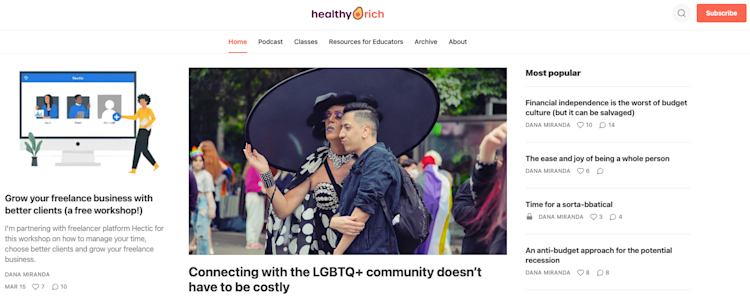
With ads and affiliates off the table, selling digital products was the best revenue option for Healthy Rich. Dana spent months creating personal finance classes for her target audience–individuals in need of financial advice and support–but when launch day arrived, she learned a difficult lesson.
Dana loved the course content she had created. She also enjoyed talking to her students, hearing feedback, and answering questions. But something felt off about selling to her followers.
“I hated the entire launch. I hated the whole sales process of convincing people that they have some pain point, and I have the solution–none of it felt right for me,” Dana remembers.
Selling products to individual audience members was not the way forward, which was a big problem. Even though this was Healthy Rich’s monetization plan, she wanted her followers to have access to the information for free. She needed to bring in money but didn’t want that money to come from the pockets of the people she was trying to help.
When creating products for your target market feels wrong, try shifting your audience
To get more perspectives, Dana had conversations with educators and community organizers. From those talks, she realized that there was a huge need for personal finance curriculum–and she could be the person to provide it.
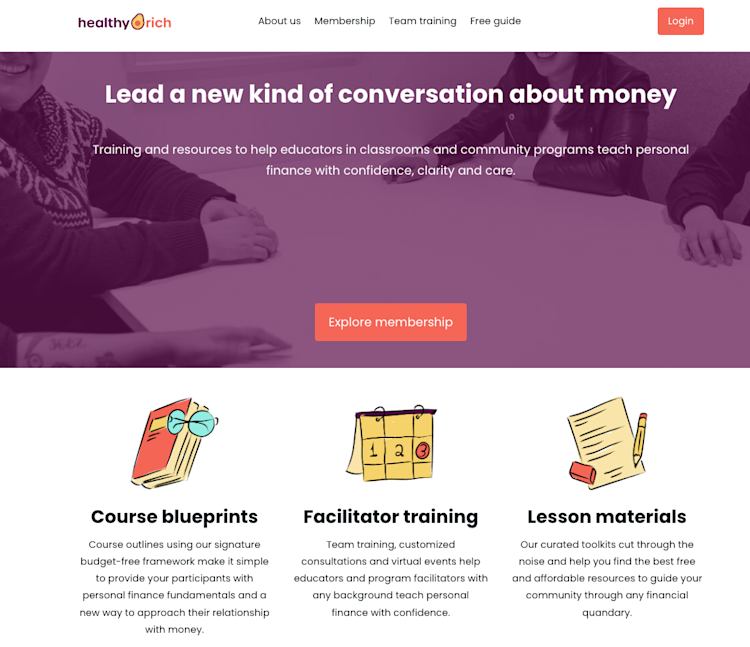
“The need for personal finance education is growing,” Dana explains.
“There are a lot of states passing mandates that you have to have a personal finance class to graduate high school, but most of those are unfunded and there’s not a specific educational track for someone to become a personal finance teacher. Educators coming into the space are often just told to teach a personal finance class and don’t feel prepared for it.”
The same issue existed among non-profit workers and those who serve vulnerable populations.
“People who work in a non-profit organization may be helping people in another area of their lives, but it’s all inextricably connected to money. They’re fielding questions about people’s finances that they don’t feel confident answering. I want to help people understand this subject so they can deliver that information with confidence.”
Dana realized that she could bypass selling products to end consumers and instead serve educators and trainers with a much wider audience. Her message could reach more people, her business could earn money, and she could feel good about her impact.

“I like to give content to the people who need it for free as much as possible. Serving community organizations and schools is a way for me to make this education available to the people who need it because individuals are participating in those programs and classes for free,” she shares.
“This opened up a new audience for my business because I was able to empower facilitators and instructors. I can work with both audiences without directly selling classes to each individual person.”
When Dana started to build out her new program for educators, it clicked.
“My first course launch was a good experiment. I’m glad that I learned what I did, but I’m also glad that I learned quickly and moved on to the next chapter.”
Dana needed a place to house all her new offers, and she found Podia while researching different online creator platforms.
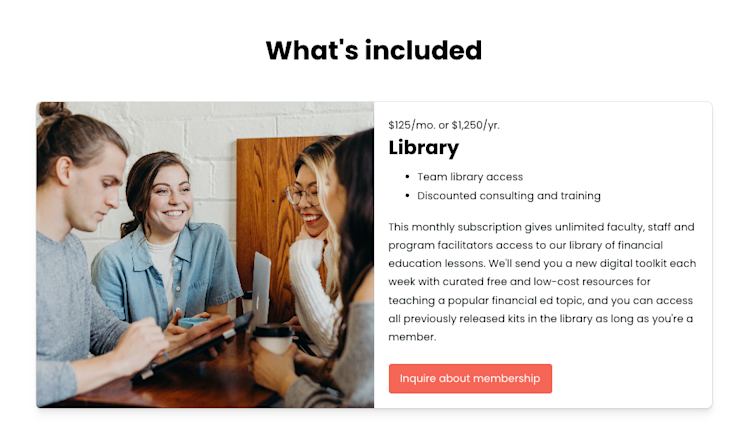
“I use Podia for my membership, which is technically a community, and I’m setting it up as a library of resources for educators. We’re using the community space as a library and also as a community forum for people, just like a brick-and-mortar library would have,” Dana explains.
“I am using the coaching feature because I’ll be scheduling consulting calls and virtual training with people. And I plan to do webinars with members, so I’m kind of using the gamut.”
In the future, Dana also plans to build an online course through Podia. She hopes to make a self-study training option, and having everything in one place makes it easy to grow.
“Podia gives me the flexibility to create what I want. I love it that way.”
Your ideas aren’t limited, and your technology shouldn’t be either.
To find potential clients, connect on LinkedIn through shared work
To find her first clients in her new target demographic, Dana turned to social media. On LinkedIn, Dana found that connecting with people about their current projects and achievements was an easy way to start a conversation.
“People like to talk about the work they’re doing. Follow the organizations that you would want to work with and see what they’re up to,” Dana notes.
“It’s been really helpful for me to know the niche that I want to work with, which is educators and nonprofit organizations. I live in Wisconsin, so I’m starting locally with organizations in the community. I can reach out as a fellow community member and say, ‘I care about the work that you’re doing in my community. Let’s talk about how we could work together.’”
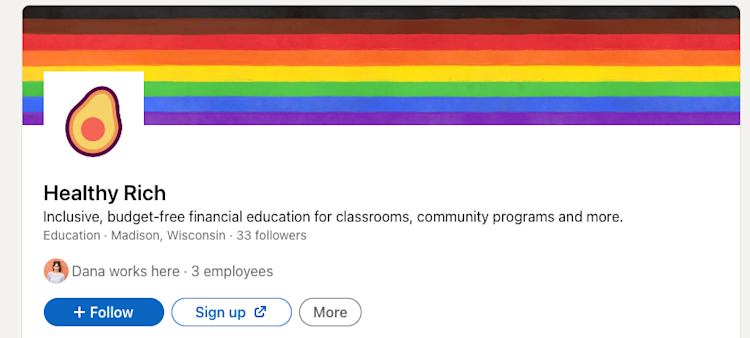
By reenvisioning her target audience and the products they need, Dana transformed Healthy Rich into so much more than a blog about personal finance advice. Today, it’s an opportunity to completely change societal conversations around money.
“The way that we talk about money is a problem, and I want to do it differently. I want to provide resources that educators need and also make sure that it’s being taught with a more inclusive and nuanced lens, instead of just the same old budgeting and debt paydown stuff that I was seeing.”
By shifting her target audience from individual people to educators and non-profit workers, Dana stayed true to her values and found a better way to share her knowledge with those who needed it most.
Blaze new trails and avoid comparing your journey to others
Dana reminds creators that “there’s no perfect path for what this career looks like. You have to just experiment and figure out what works for you.”
Part of finding your own path means not comparing yourself to other creators. Instead, Dana recommends looking to the past to see how much you’ve grown.

“Everyone is always at one stage wanting to be at the next stage. What’s really helpful for me is to think about myself five or ten years ago,” she says.
“When I started freelancing, I wanted to be a writer. I started taking on some freelance gigs and blogging, and for my first few years, I was earning very low pay. Whenever I feel frustrated with where I am in my business, I look back at me then and remember what I’ve achieved.”
“I was able to get a full-time job as a staff writer,” she shares. “In the last couple of years, I made six figures freelancing. Now I’m pivoting into a new phase where, instead of my revenue primarily coming from freelance writing, I want it to come from my business.
“It’s frustrating figuring out how to make it work, but if you told me twelve years ago that this is the position I would be in, I would not believe that it could happen. I’d be really astonished.”
At the end of the day, taking the leap to follow your creativity is a huge win, and you’ve probably come farther than you realize.
“I think that pursuing this kind of dream is a huge thing to celebrate no matter which stage you’re in.”
We couldn’t agree more. If you’re ready to begin your own creator journey like Dana, Podia can provide the tools to help you get there. Get your free 30-day trial of Podia today and have fun blazing new trails.
